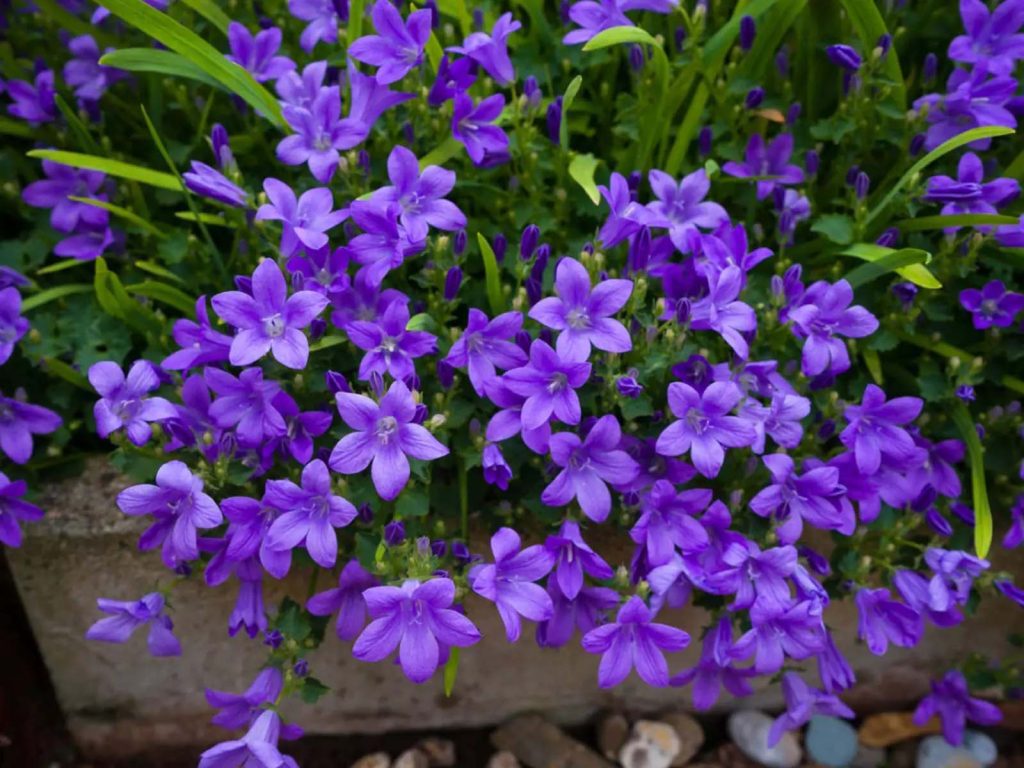Campanula is a delicate ornamental flowering plant that wins the hearts of everyone who has ever seen it. Campanula flowers are used to decorate parks and front gardens. If such beauty has appeared in your home, caring for it is simple, but requires knowledge of some nuances. Let’s find out how to care for campanula and what this beautiful plant needs.
What Is a Campanula Plant?
Campanula flower is a herbaceous plant of the Bellflower family. The name bellflower suggests a plant with bell-shaped flowers and this is also reflected in the scientific name: campana means “bell,” and campanula is the diminutive: little bell. This versatile perennial is quite ancient, and its original deposit is considered to be the Mediterranean. Campanula is considered to be a symbol of family happiness in the house. A lush bloom covers the entire plant. It usually blooms from mid-spring to late summer.
Flowers in most species are collected in the inflorescence of 3-5 pieces, their size is up to 3 cm (1.2 inches). The color of campanula flowers is mainly purple, but plants with reddish, blue, and white flowers are also found. Flowers at the moment of full disclosure become like stars. At the end of flowering, a capsule fruit with small seeds is formed. The leaves are serrated, typically oval. Depending on the variety, the foliage can be evergreen or deciduous.
The genus Campanula includes several hundred varieties, most of which come from temperate regions in the Northern Hemisphere and the Mediterranean countries. Campanula has a wide variety of colors and flower shapes. Numerous species are readily used to decorate gardens and terraces, but they also look great indoors with their cute star-shaped flowers.
Most Popular Campanula Species
The range of campanulas is diverse, but only smaller species can be used indoors.
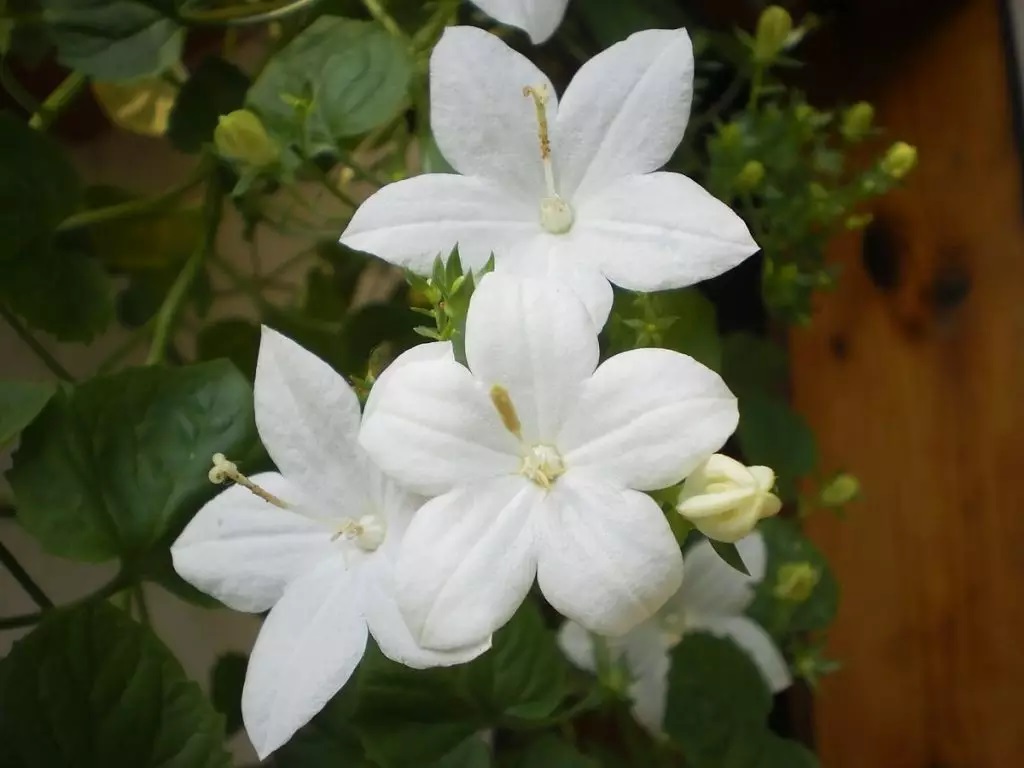
Among the various campanula species that are very popular as houseplants, there is Campanula isophylla (Italian Bellflower or Star of Bethlehem) with predominantly white (less often blue) flowers that resemble large stars in shape. It is best to keep this hanging plant in a hanging basket. The big advantage is that by removing wilted flowers, you enable them to bloom again in the summer.
Even though the plant is rather hardy for outdoor planting in USDA zones 8–10, it is very difficult to endure winter in other zones. It is best to cut them back in the fall and place them in a cool (about 40-50 ˚F) but sufficiently sunny place for the winter. For example, a garage would be a great option. Even though the plant is dormant in winter, it still needs some watering. Try not to allow the soil to completely dry out, as this can adversely affect the appearance of the plant.
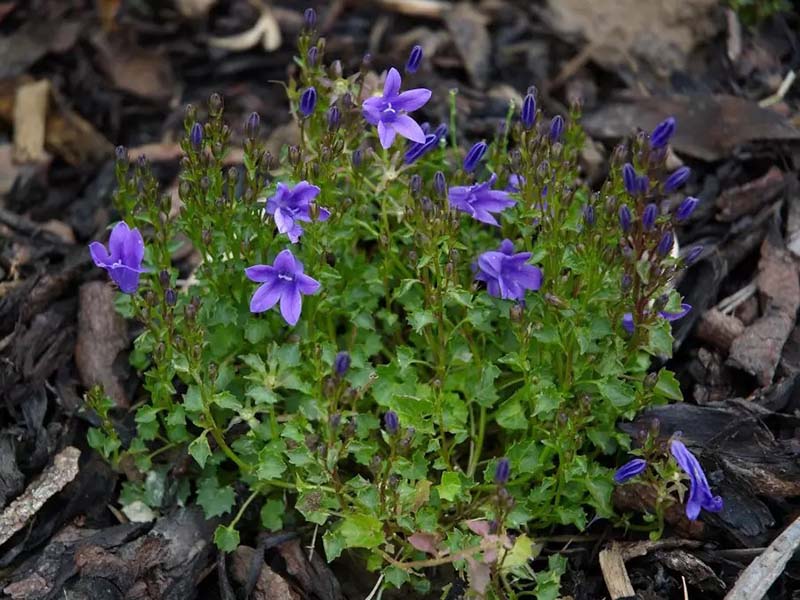
Campanula portenschlagiana (also known as campanula muralis) is characterized by smaller, most often purple (although you may also see white or lavender-blue) flowers. Gardeners love to place this type in various rock gardens because there it looks just incredible!
By the way, this species is much more hardy than the previous one and feels fine in USDA zones from 2 to 8. You can easily grow a purple campanula bellflower indoors and then transplant it outdoors in a rock garden, where it can grow for many years as a perennial and delight you with its flowering in spring and summer.
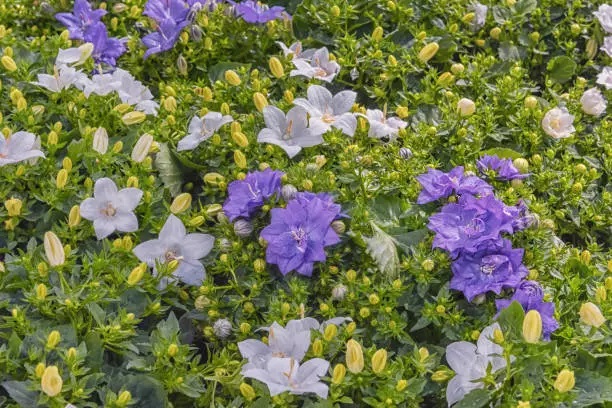
Haylodge bellflower (known as campanula x haylodgensis) is a unique hybrid of two plants: C. cochlearifolia and C. carpatica. This is an incredibly beautiful mountain plant, although it is quite difficult to find it. This campanula has small white and pale blue or pale purple bells, most often double. As with C. isophylla, removing wilted flowers encourages new growth. Haylodge bellflower is fairly hardy and can be grown in USDA zones 3-8 without problems. Most frequently, this plant is grown outdoors, as a border or decoration for a rock garden. Looks great in both cases!
Campanula Care
Campanula care indoors does not require much effort and cost. It is a very delicate and decorative flower that can beautify any living space.
Lighting
Campanulas flower needs bright ambient light. In the summer, campanula in pots is displayed on the windows on the east or west side, in winter – on the south window. It is worth considering that from a lack of lighting, the shoots of the plant are strongly stretched, it blooms poorly and loses its decorative effect.
Moisture and Watering
Watering in care for campanula flowers, as with growing any other plant, is one of the main aspects. The campanula plant is not picky about air humidity. In the spring and summer, the plant requires abundant watering. At this time, a period of active growth begins. The soil should always be moist. With the onset of autumn, the plant is watered less often, in winter – no more than 1 time in 10 days. The most important thing in this business is not to get carried away and not overwater the plant. One of the first signs that the bellflower is suffering from excess moisture is the appearance of brown spots and the lethargy of the flowers, it seems that the campanula is dying.
Soil Composition
In the wild, the bellflower grows on rocky ground. This plant has no special requirements for soil. It is planted in loose and light soil. This ensures good air exchange, which is very important for the root system. You can prepare a soil mixture from leaf, turf, peat, and humus soil with the addition of sand in equal parts.
Transplant
At home, planting, as well as its transplant, is carried out in early spring. Since this flower has a short life cycle, it is rarely transplanted, and more often young cuttings are used to grow new specimens.
Wintering
With the onset of cold weather, the plant stops its growth, along with this, its need for watering decreases. Long shoots are cut on the plant and transferred to a cool place. The flower is provided with a temperature of content in the range of 55-59 °F and is periodically watered – no more than once a month.
Pruning
With the arrival of spring, the bellflower is cut off, removing dried branches and leaves, and watering is increased.
How to Deadhead Campanula
- First, you need to find flowers that seem shriveled and lose their color. Follow the stem of the withered flower to a new side bud.
- You can either cut a wilted flower with hand pruners or pinch it off with your fingers. It is recommended to remove dead flowers at least once a week.
- Also, remove any damaged and diseased leaves and flowers. At the end of flowering, cut the stems to fresh basal foliage.
Deadheading is an essential aspect of campanula care, as it helps keep them healthy and beautiful.
Toxicity
In general, the plant is not toxic when consumed by either humans or animals. But everywhere there must be a measure. If children or animals eat too much of it, it can lead to nausea, vomiting, and loss of appetite.
Pests
Most often, this indoor flower is affected by scale insects and spider mites. The reason for this is improper care. Affected specimens are treated with an insecticidal solution. It is worth remembering that high humidity in the air and soil can provoke the appearance of gray rot, which is very dangerous for the plant.
How to Grow Campanula
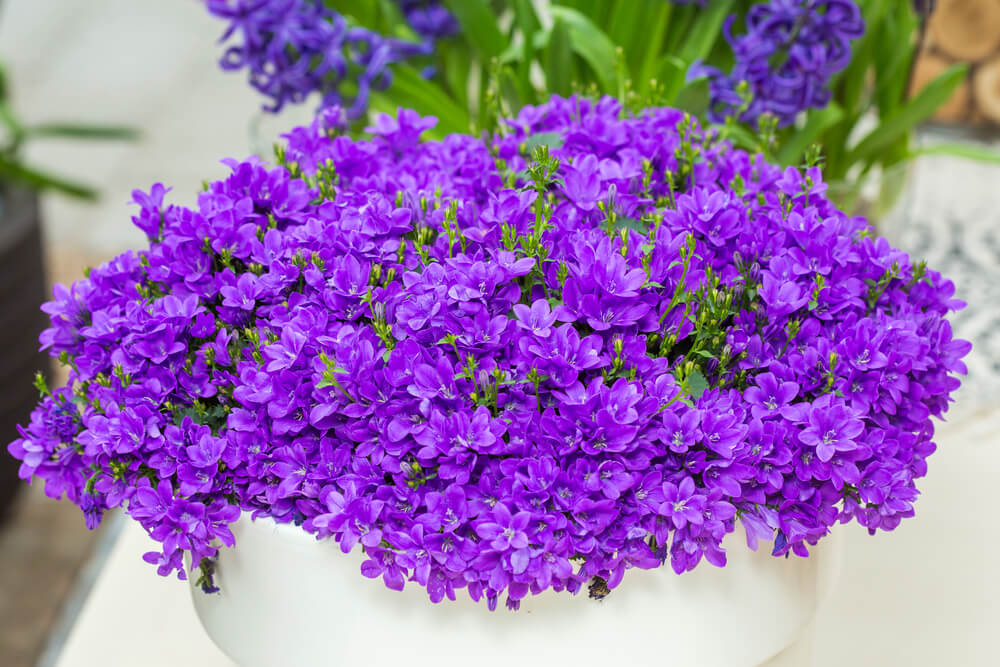
Growing campanula is possible in two ways – using cuttings or seeds. This procedure should be carried out in the spring.
Small plant seeds should be sown on the surface of the nutrient soil and, over time, you should spray them using a spray bottle. After 7-14 days, the seedlings may already sprout. After they have completely grown stronger and released a couple of their first leaves, they should be seated separately in new pots.
The method of growing a bellflower using cuttings is much easier and more efficient. For a successful breeding process, it is worth using those cuttings that were cut from the lower part of the stem. Planting the shoots of the plant for effective rooting should take place in a special soil mixture of sand and peat. Such a composition can provide the plant with a quick rooting process.
The planted shoots should be sprayed regularly. It should be remembered that in this matter it is very important not to overdo it since a large amount of moisture can serve to form rot on the root system.
Some plants are true icons of style and excellence. Some flowers are considered symbols of wealth and prosperity. Bellflowers are undoubtedly the real companions of tenderness and romance. Such plants can be found in the fields, as well as among the stony mountain landscapes. Campanula plants always attract the attention of tourists and various flower growers, both amateurs and real professionals.


